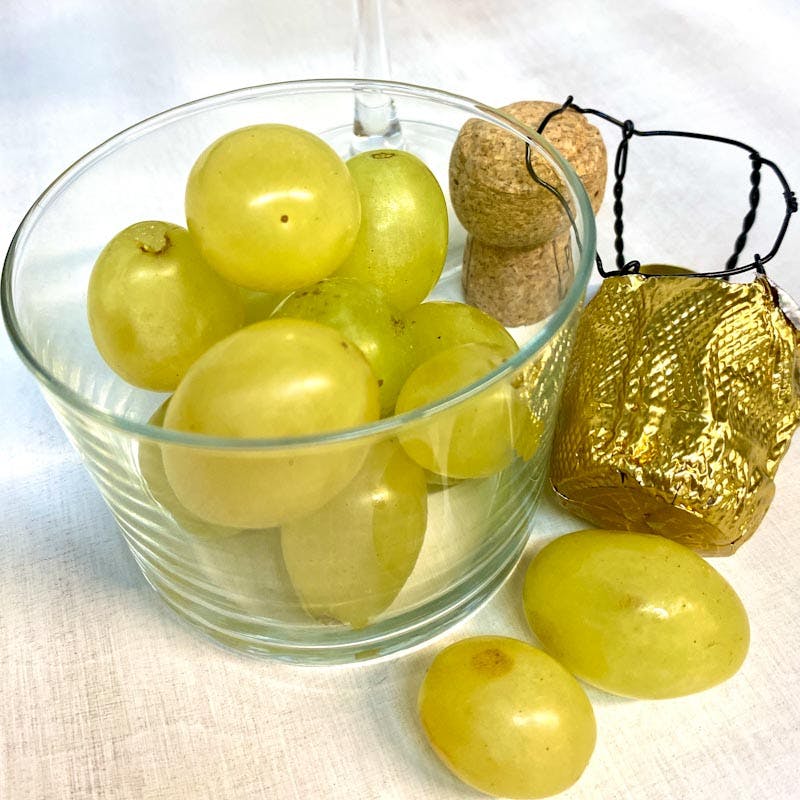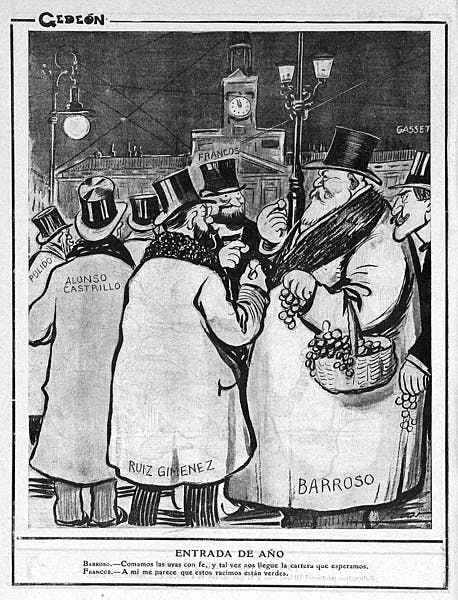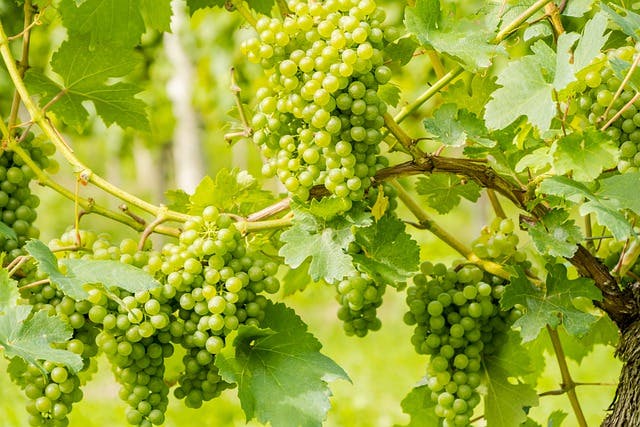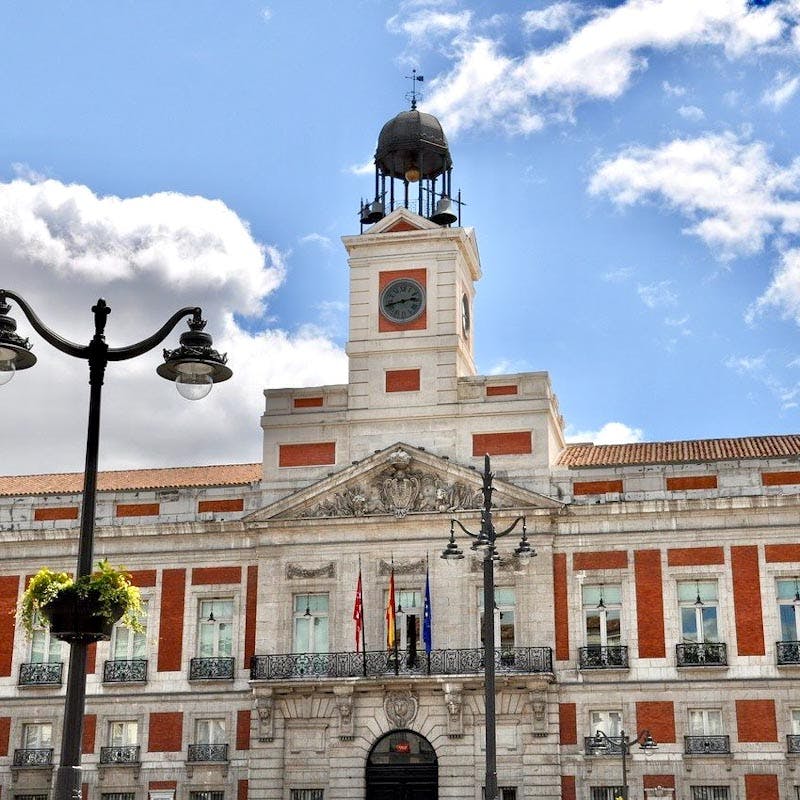The Twelve lucky Grapes
This week I bring you one of the most popular traditions in our country. This festivity has spread throughout Spain and is becoming more and more widespread in different parts of the world, celebrating abundance, prosperity and good luck for the year that is about to begin.
December 31st
In one of the most important dinners of the year, we fill the table with our best products and recipes, the turrones and liqueurs arrive to make time until midnight. One of the most awaited traditions is approaching; the twelve lucky grapes for New Year's Eve are ready to be eaten.

Five minutes to midi night, and in the homes of thousands of Spanish families and the main squares of the big cities, they are waiting for the new year's arrival. In these last minutes of the year, time stands still and the nerves to eat the lucky grapes at the right time can be felt in the atmosphere. Children and adults make sure that no grapes are missing.
Two minutes before, we are all attentive to the mythical clock in the Puerta del Sol, waiting for midnight to arrive and the count to begin.The first four double chimes representing the quarters start ringing, giving way to the twelve chimes right at midnight.
The time between chimes is approximately three seconds, and this is the time to eat each of the grapes. One grape for each month of the year will bring you good luck in your lives. A night full of joy and the hope that everything will improve as the months go by.
What is the origin of the New Year's Eve grapes?
In Spain, the first references date back to the late 1880s in Madrid, where only the high sphere of the society had a tradition of ending the year toasting with champagne or cava accompanied by grapes, imitating the exclusive private parties that the French celebrated at Christmas. It seems that at first, due to the high cost of some of these products, it was a custom strictly among the wealthier social classes.

Caricature of politicians eating grapes in the Puerta del Sol on the 1st of January 1911.
While the wealthier classes enjoyed these special celebrations, the city council banned the popular street festivities held on Twelfth Night due to the uproar caused and the discontent of the Catholic Church, which dismissed them as "irrelevant and grotesque".
In protest against the prohibitions imposed by the city council, the working class in Madrid took the opportunity to gather at the Puerta del Sol and listen to the chimes of the clock on New Year's Eve.
As a mockery of the bourgeois custom and protest against the restrictions they suffered, they also began to eat their bunches of grapes in the crowded square, thus mocking the wealthier classes of society.
Years later, in 1884, the national newspaper El Imparcial published an article under the headline "Las uvas bienhechoras" ("Do-gooder grapes").
Also, El Correo Militar wrote in one of its articles, "...la imperecedera costumbre de comer las uvas al oír sonar la primera campanada de las doce..." ("The everlasting custom of eating grapes at the sound of the first stroke of midnight...").
From that moment on, the tradition of the twelve lucky grapes was established, and during the following decade, this fact occupied the front pages of the leading national newspapers. Merchants did not hesitate to take advantage of this fact to increase their sales by naming them "lucky grapes", "fortune grapes", or "miraculous grapes".

In addition to all this, in 1909, there was a surplus grape harvest in Alicante, and the winegrowers, to sell the product, developed a creative and innovative Christmas campaign promoting the consumption of grapes, associating it with good fortune for the coming year.
In this way, they popularised the tradition of eating grapes on the last night of the year. They began to be widely consumed throughout the country, thus producing the definitive impulse to ultimately consolidate this popular tradition.

La Puerta del sol Clock (Click and watch the tv program)
The twelve lucky grapes thus became a phenomenon that even began to be broadcast on Spanish Television in 1962 from the Puerta del Sol. Since then, millions of people have eaten them in different Latin American countries, such as Venezuela, Mexico, Argentina, Ecuador, Colombia, Chile and Peru. Whether fresh in bunches or canned in individual jars, peeled and seedless, the twelve grapes are a must to end the New Year's Eve celebration with the best of fortunes.
So now you know, friends, if you want to have twelve months full of prosperity and luck this New Year, you have to eat your grapes at the right time!
Merry Christmas, Happy New Year and good luck!



